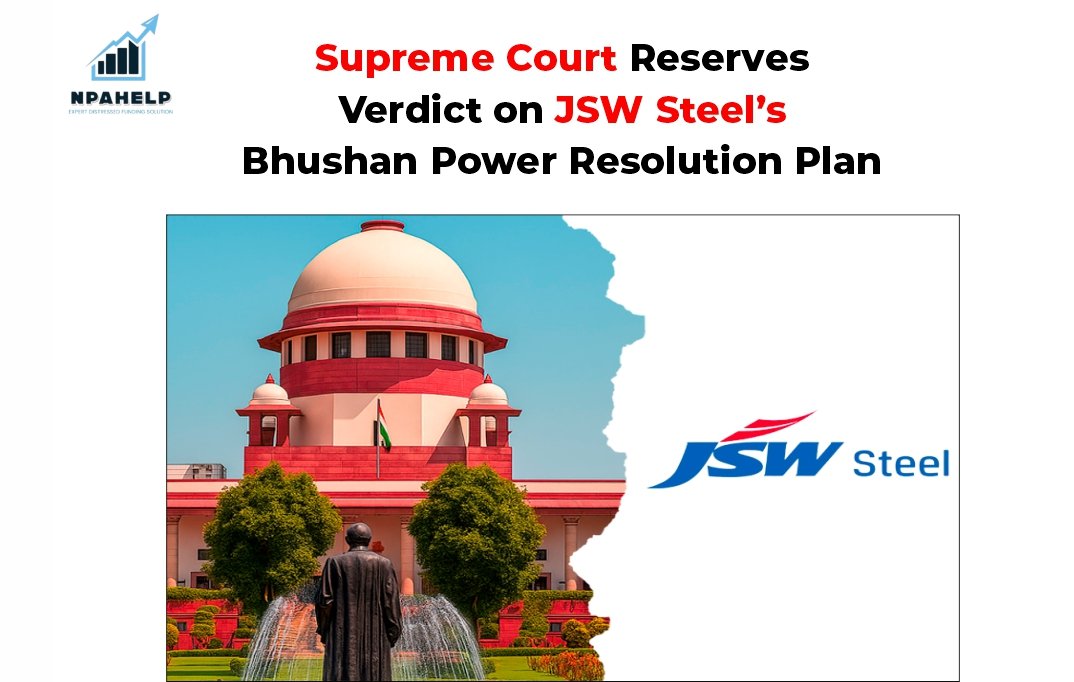
Supreme Court To Give Final Decision Soon in Bhushan Power Insolvency Case
The Supreme Court of India has finished hearing arguments about the Bhushan Power and Steel Ltd (BPSL) insolvency case. It will soon give its final decision on the resolution plan submitted by JSW Steel Ltd, worth ₹19,700 crore. This decision is very important for the country’s insolvency law, called IBC and for people who have lent money to companies.
What Happened in The Bhushan Power Case
Bhushan Power had huge debts of over ₹47,000 crore. In July 2017, Punjab National Bank and other lenders asked the court to start the insolvency process because Bhushan Power was unable to pay back its loans. This made Bhushan Power one of the biggest defaulters in India.
JSW Steel and some other companies wanted to take over Bhushan Power by submitting bids. JSW Steel offered more money than others and was chosen by the committee of creditors. In 2019, the National Company Law Tribunal (NCLT) approved JSW Steel’s plan. The process was delayed due to legal challenges, but JSW Steel finally started running Bhushan Power in 2021. They have now increased Bhushan Power’s production almost two times since 2017.
Why There Is A Dispute Between JSW Steel And Lenders
The lenders say JSW Steel did not give them fair returns as promised. They want over ₹6,155 crore more, including:
- ₹3,569 crore in earnings Bhushan Power earned during the insolvency,
- ₹2,509 crore in interest for delays in payment,
- ₹76 crore interest to other creditors.
The lenders say they lost money because JSW delayed giving them payments.
On the other hand, JSW Steel says they bought Bhushan Power on an “as-is, where-is” basis. They argue that any profit made during the insolvency should belong to them and not be shared with lenders. JSW Steel also says changing the agreed terms now will create problems for future resolutions.
Problems Raised By Other Creditors And Promoters
Some other creditors and even the former owners of Bhushan Power say JSW Steel did not keep all promises. For example, JSW Steel was supposed to put ₹8,000 crore as working capital, but they only put ₹100 crore. They also delayed paying operational creditors for over 900 days. These creditors accuse JSW Steel of wrong actions and even collusion with some officials in the resolution process.
Supreme Court Revisits Its Earlier Decision
Earlier this year in May, the Supreme Court had cancelled JSW Steel’s plan and ordered that Bhushan Power be liquidated (sold off to pay creditors). JSW Steel had to return ₹19,350 crore to the banks. But recently, the Supreme Court took back that earlier order after seeing some mistakes and factual errors in its earlier decision. Now, the court is hearing the case again carefully with a new bench.
What This Means For India’s Insolvency Law
This case shows some problems in India’s insolvency law process. Long delays, court reversals and disagreements affect the confidence of investors and banks. People feel the insolvency process should be faster and clearer. Experts say there should be better rules so that creditors get their money on time and court decisions do not create confusion.
What To Expect Next
The Supreme Court’s final decision will affect what happens to Bhushan Power. If JSW Steel wins, it will continue to run the company. But if the court decides against JSW Steel, then new bids will have to be invited, or the company could be liquidated.
This judgment will also send a strong message to companies and banks on how insolvency cases will be handled in the future. It will shape the way India’s insolvency law works and will affect big loans and the recovery of money by banks.
Frequently asked Questions (FAQs )
-
Why is the Bhushan Power insolvency case so important?
This is one of India’s biggest insolvency cases, involving over ₹47,000 crore in debt. The Supreme Court’s decision will set an important precedent for how big corporate insolvency cases are handled under the Insolvency and Bankruptcy Code (IBC).
-
What is the main dispute between JSW Steel and the lenders?
Lenders claim JSW Steel owes them an additional ₹6,155 crore, including profits earned during insolvency and interest for delays. JSW Steel argues it bought the company on an “as-is, where-is” basis, so these extra payments are not required.
-
Why did the Supreme Court reverse its earlier decision?
In May, the Supreme Court cancelled JSW Steel’s resolution plan and ordered liquidation of Bhushan Power. But later, it found mistakes and factual errors in that ruling, so it decided to hear the case again with a fresh bench.
-
How will this decision impact India’s insolvency process?
The judgment will affect investor confidence, bank recoveries, and the speed of future insolvency cases. A clear, fair ruling will help strengthen the IBC, while uncertainty could discourage future bidders in stressed asset sales.